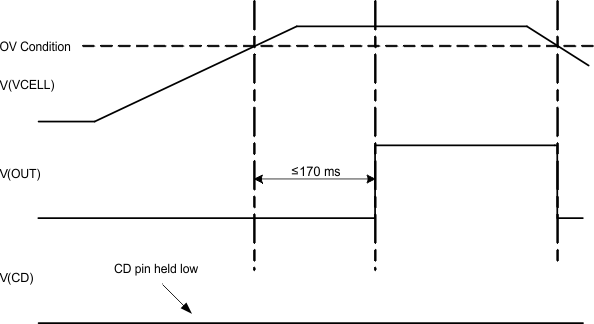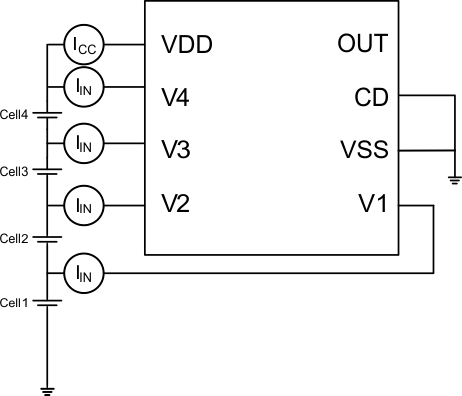SLUSAX0E December 2012 – April 2021 BQ7716
PRODUCTION DATA
- 1 Features
- 2 Applications
- 3 Description
- 4 Revision History
- 5 Device Comparison Table
- 6 Pin Configuration and Functions
- 7 Specifications
- 8 Detailed Description
- 9 Application and Implementation
- 10Power Supply Recommendations
- 11Layout
- 12Device and Documentation Support
- 13Mechanical, Packaging, and Orderable Information
Package Options
Mechanical Data (Package|Pins)
- DPJ|8
Thermal pad, mechanical data (Package|Pins)
Orderable Information
8.4.3 Customer Test Mode
It is possible to reduce test time for checking the overvoltage function by simply shorting the external CD capacitor to VSS. In this case, the OV delay would be reduced to the t(CHGDELAY) value, which has a maximum of 170 ms.
Avoid exceeding any Absolute Maximum Voltages on any pins when placing the part into Customer Test Mode. Also avoid exceeding Absolute Maximum Voltages for the individual cell voltages (V4–V3), (V3–V2), (V2–V1), and (V1–VSS). Stressing the pins beyond the rated limits may cause permanent damage to the device.
Figure 8-3 shows the timing for the Customer Test Mode.
 Figure 8-3 Timing for Customer Test Mode
Figure 8-3 Timing for Customer Test ModeFigure 8-4 shows the measurement for current consumption for the product for both VDD and Vx.
 Figure 8-4 Configuration for IC Current Consumption Test
Figure 8-4 Configuration for IC Current Consumption Test